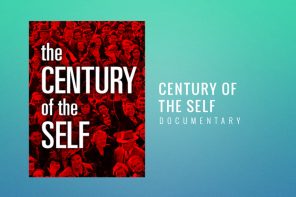
Wednesday February 14, 2024
The Commercialisation of Valentine’s Day
Valentine’s Day: loved by many and hated by some who ask in suspicion, “Is Valentine’s Day just a marketing ploy?” Well, not exactly. In the tapestry of time, Valentine’s Day weaves a rich history of love, poetry, and handmade sentiments. Yet, seeing how big and commercial Valentine’s Day has become, it’s not surprising to see the increasingly negative sentiment towards the festive day.
Valentine’s Day: A History of Love, Poetry and Handmade Cards
Accounts of its origins are quite vague, though we know it was based on the figure of Saint Valentine. While there was more than one figure attributed to Saint Valentine, the most notable story tells of a priest who conducted marriages for couples in secret when Emperor Claudius II outlawed marriage for young men as they made for better soldiers than their married counterparts. In response to the priest’s defiance, the emperor ordered his execution. His legacy survived long after his death, with the famous festive day of Valentine’s established in his honour.
Many people believe that Valentine’s Day started to solidify its association with romantic and courtly love officially in the 14th century. During this era, poets began to talk about Valentines, starting with English poet and author Geoffrey Chaucer, who wrote about how birds gather annually on Saint Valentine’s Day to choose their mates in his work titled ‘The Parliament of Fowls.’ Around 1599, Shakespeare also connected Saint Valentine’s Day with being someone’s valentine in his renowned play, Hamlet.
This trend continued until the day finally gained mainstream popularity in the 18th century when couples began to gift each other handmade Valentine’s cards, as pre-made cards were still uncommon. Then, once the industrial age came around, mass-produced cards were introduced and became a big business. By the mid-1820s, around 200,000 Valentine’s cards were circulated in London alone.
While greeting cards are still a big business today, gifts associated with Valentine’s Day extend to other things such as sweets and chocolates, flowers, evenings out, jewellery, and so much more. Recent figures have shown that people in the UK spend approximately £1.38 billion on Valentine’s Day, while people in the US spend around $23.9 billion, and these numbers will only continue to grow in upcoming years. But how did Valentine’s Day become commercial?
The Commercialisation of Valentine’s Day
In 1861, the eminent British chocolate maker Richard Cadbury started to package his company’s chocolates in heart-shaped boxes, which he called ‘the fancy box.’ It could also store mementoes such as love letters, adding another unique selling point to the packaging. This marketing move took the industry by storm, and many other chocolate companies followed suit, not only by including hearts in their packaging but also through advertisements.
By the 1900s, many chocolate companies frequently included hearts as the main component of their Valentine’s advertisements, with Milky Way’s 1954 advertisement depicting a feminine heart-shaped figure eating chocolate with the slogan ‘To my candy kid,’ Schrafft’s Chocolate 1956 advertisement portraying a heart-shaped box of chocolates with the phrase ‘for the only girl in the world’, Whitman’s Chocolate 1960 advertisement showing Cupid holding chocolates instead of an arrow along with reference to Valentine’s on February the 14th, and countless others. The endless associations that chocolate makers made between chocolate and Valentine’s Day solidified the commodity’s status as a Valentine’s Day staple.
On the other hand, it’s unclear when flowers became interlinked with Valentine’s Day, as the gift of flowers has always been regarded as a romantic gesture. What we do know is that flowers were used in the Victorian Era to convey and share secret messages. Red roses, in particular, had an affinity for representing love, passion, desire and devotion. The theory is that, as florists and people were aware of what the red rose represented, they frequently incorporated it in Valentine’s Day imagery and designs to shape narratives. Thus, similarly to the case of chocolates, the more ingrained roses became with the holiday.
As many PR and marketing professionals started to realise the opportunities that the festive day poses, other industries quickly jumped on the bandwagon, promoting their brands and products through a variety of Valentine’s PR and marketing campaigns. As a result, today’s idea of Valentine’s Day gifts extends far beyond the traditional gift of greeting cards, chocolates and roses. It includes practically every gift or service category considered romantic or intimate.
An Authentic Approach to Valentine’s Day
As of recently, many consumers have expressed negative sentiments towards Valentine’s Day, and it’s not because they’re single. In 2020, a survey found that almost half (47%) of British couples had no plans to celebrate the holiday as it was ‘too Hallmark,’ and in 2022, Statista found the main reason why consumers choose not to celebrate Valentine’s was that it felt too commercial.
Their sentiments didn’t just appear baselessly, as last year, a study that analysed social media data found that the keyword ‘Valentine’s Day’ is associated with terms such as ‘shop’ and gift’ 131.17% more than the term ‘love.’
Perhaps brands should assess whether it’s appropriate for them to join in on the festivities altogether. There are many days in a year that PR and marketing practitioners could tie their campaigns to, such as Easter, Halloween, Christmas, Eid, or even the diverse choices of National *something* Days.
Of course, brands can have fun in their campaigns, and PR and marketing are all about embracing creativity. However, when looking at things from a strategic lens, brands should be more intentional about their PR and marketing by assessing whether the festive days resonate with their products, services or values.
Trying to integrate romantic messaging in a corporate post might come across as a little award, such as in the case of an Australian MP’s social media binge that shared memes to urge ‘lovers and my Gov-ers’ to download the government services app, myGov. One meme reads, “I’m also just a girl, standing in front of a boy, asking him to download the myGov app.” But what does a government app have to do with love and Valentine’s Day?
It’s understandable that, given the boost in revenue and visibility that Valentine’s Day provides each year, it seems unlikely that brands will de-commercialise the day. Regardless, there is still time to change people’s perceptions. Many industry experts have suggested that brands that choose to celebrate Valentine’s Day should start focusing on celebrating love more authentically. This means fewer campaigns that simply pressure the consumer into purchasing, but instead, campaigns with an emphasis on redefining and reviving the notion of love by connecting with the audience on a human level.
Curzon PR is a London-based PR firm working with clients globally. If you have any questions, please feel free to contact our Business Development Team bd@curzonpr.com







Follow us